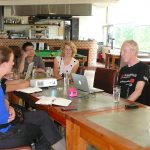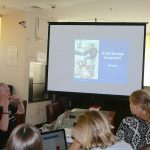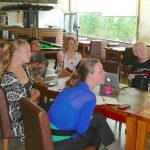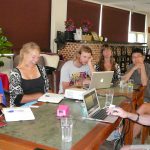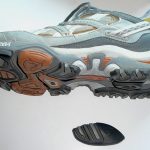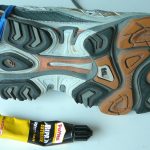My biking heroes have a nice update. Just click the link:
See: http://tinyurl.com/my8q3sx
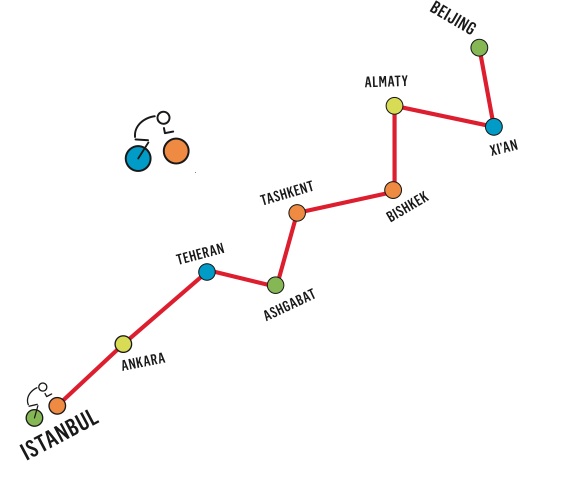
Doing 12,500 Km on a bike from Istanbul to Beijing… Oh boy!
See earlier post on those brave bikers.
The newsletter mentions that The Study Road will be on the Masterbeurs in Utrecht (Netherlands) on the 10th and 11th of October 2013.
Details on Beijing’s action plan on clean air
As detailed in my book Toxic Capitalism, the issue of the air pollution in Beijing is serious but also complicated.
What happened during the run-up to the 2008 Olympics is another story; I was deeply involved in following that story, how Beijing was forced to take draconian measures – something that was only possible then and cannot be copied. I plan to write about that in detail one day. I talk about that in seminars I organize.
Car emissions are believed to account for one-third of PM2.5, a major air pollutant, in most congested areas in Beijing. Studies suggest a quarter of the pollutants in the city’s air comes from its surrounding areas.
Contrary to what some people believe abroad, the city government is pretty aware of the dramatic increase in air pollution and is now intensifying efforts to reduce the PM2.5. They have little choice as the population is too aware of the severity of the pollution and has even forced the authorities to start monitoring PM2.5.
See here the main points in the action plan. See the pdf for the full details and the sources (China Daily): 130903 BJpollution
Highlights – Beijing’s action plan on clean air
Five-year plan 2013-2017
- To reduce PM 2.5 density by 25% or more by 2017 with PM 2.5 density controlled to around 60 micrograms/m3, a 25% drop from 2012 levels.
- To slash 13 million metric tons of coal consumption over five years (more than 50%) based on 2012 levels; to reduce the proportion of coal used within the city’s total energy mix to below 10%. Coal consumption to be less than 10 million T by 2017.
- To completely eliminate the use of coal within the Second Ring Road.
- Vehicles from outside Beijing will be forbidden from entering the Sixth Ring Road unless with permission.
- To control private car ownership within 6 million by the end of 2017, from more than 5.2 million as of early 2013.
- Vehicle fuel use to be cut by at least 5% in 2017 from 2012 levels.
- One million old polluting vehicles to be scrapped from 2013 to 2017.
- A congestion charge would be levied mainly on vehicles in the downtown area and will be set out in the near future by the Beijing Environmental Protection Bureau and Beijing Commission of Transport.
- Public transportation in central Beijing to account for 52% of all trips in 2017.
- More than 65% of public vehicles to be clean energy vehicles by 2017.
- More than 60% of the city to be covered by green space by the end of 2017.
- Area of Beijing covered by water to increase 1000 hectares from 2013 to 2017.
Do note this is only part of the story. Not mentioned here are a series of other measures, including the improvement of car fuel (gasoline / diesel), e-vehicles, etc. See earlier posts.
The Study Road 2013 finished!
I wrote about this great adventure in a previous post.
See here their “Final” report:
After 12.500 kilometers of cycling, crossing 7 countries, cycling through deserts, mountains, rain, storm, snow and valleys we made it to Beijing!
On the 6th of August the Study Road team arrived at the Dutch Embassy in Beijing where they were welcomed by the Ambassador. The program continued with lectures about Chinese environmental issues, history of Confucianism, and economy.
Sleeping in tents was not necessary anymore. The Peninsula, one of the most luxurious hotels in Beijing offered a room to each participant. So before everybody continued it’s journey in a different direction they were spoiled in the luxury of one room per person, delicious breakfast, a pool and a gym.

Arrival in front of The Forbidden City in Beijing
It has been a long journey with many adventures. Thanks to the enthusiasm and positive vibes of the team we made the first edition of the Study Road a success. So a big thank you to the pioneers who made the Study Road a reality and not just an idea!
And a big thank you to the participating universities, the guest speakers, the travel agencies and the volunteers that have been helping!
WE DID IT!
– Joya van Hout –
Read the full report: http://tinyurl.com/matpf6t
Climate Panel Cites Near Certainty on Warming
See the full article: 19 August 2013 – By JUSTIN GILLIS, The New York Times:
http://www.nytimes.com/2013/08/20/science/earth/extremely-likely-that-human-activity-is-driving-climate-change-panel-finds.html?ref=justingillis
An international panel of scientists has found with near certainty that human activity is the cause of most of the temperature increases of recent decades, and warns that sea levels could conceivably rise by more than three feet (that like 1 m) by the end of the century if emissions continue at a runaway pace.
The scientists, whose findings are reported in a draft summary of the next big United Nations climate report, largely dismiss a recent slowdown in the pace of warming, which is often cited by climate change doubters, attributing it most likely to short-term factors.
The report emphasizes that the basic facts about future climate change are more established than ever, justifying the rise in global concern. It also reiterates that the consequences of escalating emissions are likely to be profound.
“It is extremely likely that human influence on climate caused more than half of the observed increase in global average surface temperature from 1951 to 2010,” the draft report says. “There is high confidence that this has warmed the ocean, melted snow and ice, raised global mean sea level and changed some climate extremes in the second half of the 20th century.”
The draft comes from the Intergovernmental Panel on Climate Change, a body of several hundred scientists that won the Nobel Peace Prize in 2007, along with Al Gore.
One more report, to add to the ones cited in my book Toxic Capitalism.
The Study Road arrived from Istanbul in Beijing!
Yes, a crazy bunch of young people made it from Istanbul (Turkey) to Beijing, some 12,500 Km, starting 7 March 2013 and ending 15 August.
See: http://www.thestudyroad.com/
The road: Turkey, Iran, Turkmenistan, Uzbekistan, Kyrgyzstan, Kazakhstan and Beijing.
The team: Melanie Hoetmer (student in Neuroscience), Ben Seagar (Architect and winemaker), Hedda ten Holder (student in Media and Culture), Zhenbao Jin (Lawyer and Professor in Civil Law) and Joya van Hout (Founding Director) and other.
Nationalities: The Netherlands, China, New Zealand.
I was fortunate to meet the team of these great adventurers in Beijing on 8 August and I talked about my book “Toxic Capitalism”, the 2008 Beijing Olympics and more. Location: 2nd floor of Nearby The Tree in Sanlitun.
Their tour is a great promotion for biking, especially in China where bikes are many but not used enough. I do see more and more Chinese young people on expensive and fancy bikes. Cool.
Fracking: Gangplank to a warmer world
See the article 28 July 2013 in NYT by Anthony R. Ingraffea:
http://www.nytimes.com/2013/07/29/opinion/gangplank-to-a-warm-future.html
As I explain in my book Toxic Capitalism, fracking (hydraulic fracturing) might be a great new technology but if not done properly it carries very heavy risks for the environment. One of the dangers I mention is methane.
As Ingraffea mentions, methane is a far more powerful greenhouse gas than carbon dioxide, though it doesn’t last nearly as long in the atmosphere. Still, over a 20-year period, one pound of it traps as much heat as at least 72 pounds of carbon dioxide. Its potency declines, but even after a century, it is at least 25 times as powerful as carbon dioxide. When burned, natural gas emits half the carbon dioxide of coal, but methane leakage eviscerates this advantage because of its heat-trapping power. This is the gas that is released into the atmosphere unburned as part of the fracking process, and also from pipelines, compressors and processing units.
A 2011 study from the National Center for Atmospheric Research concluded that unless leaks can be kept below 2%, gas coming from fracking lacks any climate advantage over coal. And a study released this May by Climate Central, a group of scientists and journalists studying climate change, concluded that the 50% climate advantage of natural gas over coal is unlikely to be achieved over the next three to four decades.
But be sure, the fracking lobby does not want to talk about this.
Our solution? Waste less, consume wisely, reduce energy consumption, and don’t cut corners in the quest for energy and raw materials.
Driving a BMW in China but…
See here from China Daily 1 August 2013:
Quotable
“Driving a BMW but drinking polluted water – that is definitely not the modernization prospect we foresee.”
Zhou Shengxian, minister of environmental protection, was quoted by the People’s Daily as saying on Wednesday. Zhou said progress in building an ecologically responsible society can be guaranteed only by implementing strict environmental regulations and the rule of law.
Actually, a nearly similar quote is already mentioned in my book Toxic Capitalism
Better not to run a marathon with these running shoes
Quality issues in China can be both puzzling and disappointing.
Puzzling because it is hard to believe a brand like ASICS has such poor quality. I bought those in an “official shop” in Beijing but one can wonder: are they real or fake?
The model, here pictured, is ASICS TN238, “Made in China”. Fortunately I use those exclusively in the gym. The sole parts have been falling of several times. As it happened in the gym I was able to find them and glue them back myself. See here the latest one to fall of. Seems the glue they used must have a serious quality problem. Otherwise the running shoes are fine.
Now just imagine you are running a race with those, like a marathon. That would be a near disaster.
The impact of Global Warming: the Arctic and a Swiss village
The article Arctic ice melt an ‘economic time bomb’, 26 July 2013 – The Guardian – is one of the telling indicators.
Scientists say rapid melting of summer sea ice in the Arctic may release a “pulse” of methane, with dire implications for the global economy. See the full text:
http://www.scmp.com/news/world/article/1290611/arctic-ice-melt-economic-time-bomb#comment-30702
Says the article:
“ … the release of a single giant “pulse” of methane from thawing Arctic permafrost beneath the East Siberian sea “could come with a US$60 trillion global price tag”, according to the researchers who have for the first time quantified the effects on the global economy. Even the slow emission of a much smaller proportion of the vast quantities of methane locked up in the Arctic permafrost and offshore waters could trigger catastrophic climate change and “steep” economic losses, according to the study published in the journal Nature. The Arctic sea ice, which largely melts and reforms each year, is declining at an unprecedented rate. In 2013, it collapsed to under 3.5 million square kilometres by mid September, just 40 per cent of its usual extent in the 1970s. Because the ice is also losing its thickness, some scientists expect the Arctic to be largely free of summer ice by 2020.”
In my book Toxic Capitalism, published last year, this issue was already mentioned as one of the major threats to our climate. This is just a confirmation.
Another impact mentioned in my book comes out again: see what is happening in places like Switzerland. Still, people, blinded by ignorance, refuse to admit what is going on.
See: Grindelwald Journal – As Glaciers Melt, Alpine Mountains Lose Their Glue, Threatening Swiss Village, article by Jogn Tagliabue, New York Times, published: 29 May 2013:
http://www.nytimes.com/2013/05/30/world/europe/in-swiss-alps-glacial-melting-unglues-mountains.html?_r=0
Mountaineers are witness to the changes and fear the consequences when climbing.
Chinese herbs contaminated by pesticides
Now, in the saga that you can’t trust anything anymore that you eat and drink
in China, this story is very disturbing:
Traditional Chinese herbs are being contaminated with a toxic cocktail of pesticides that poses a threat to health and the environment, Greenpeace said. Its tests revealed that up to 48 of 65 samples purchased from nine pharmacies tested positive for pesticide residue, including banned substances. Some residue levels were hundreds of times higher than EU food safety standards, Greenpeace East Asia reported. The group found 51 different types of pesticide residue, and 26 of the samples contained pesticides that are banned in China. The samples included some from renowned producers such as Tongrentang, a Beijing-based pharmaceutical company founded in 1669 and the largest producer of traditional Chinese medicine. “Chinese herbs should heal, not harm people and must be pesticide free,” said Wang Jing of Greenpeace East Asia. “The current industrial agriculture system is heavily reliant on toxic chemicals at the expense of human and environmental health,” Wang said.
Dried sanqi flowers contained up to 39 kinds of pesticide, chrysanthemum up to 35 and honeysuckle flowers up to 21. Ten pesticides classified by the World Health Organization (WHO) as extremely or highly hazardous and six banned for use on Chinese herbs were found. Even leading traditional Chinese medicine makers don’t set standards or carry out tests for pesticide residue, Greenpeace claimed. Pesticide abuse in herb growing is only part of much bigger problem, which was the general failure of chemical-intensive agriculture to feed people safely while preventing environmental degradation, Greenpeace concluded, as reported in the Shanghai Daily.
(Source: FCCC Newsletter No 323, 1 July 2013)
Bad news for all of us. I do actually use TCM (Traditional Chinese Medicine) on a regular base and recently I have been drinking chrysanthemum tea. What can we still trust here?
